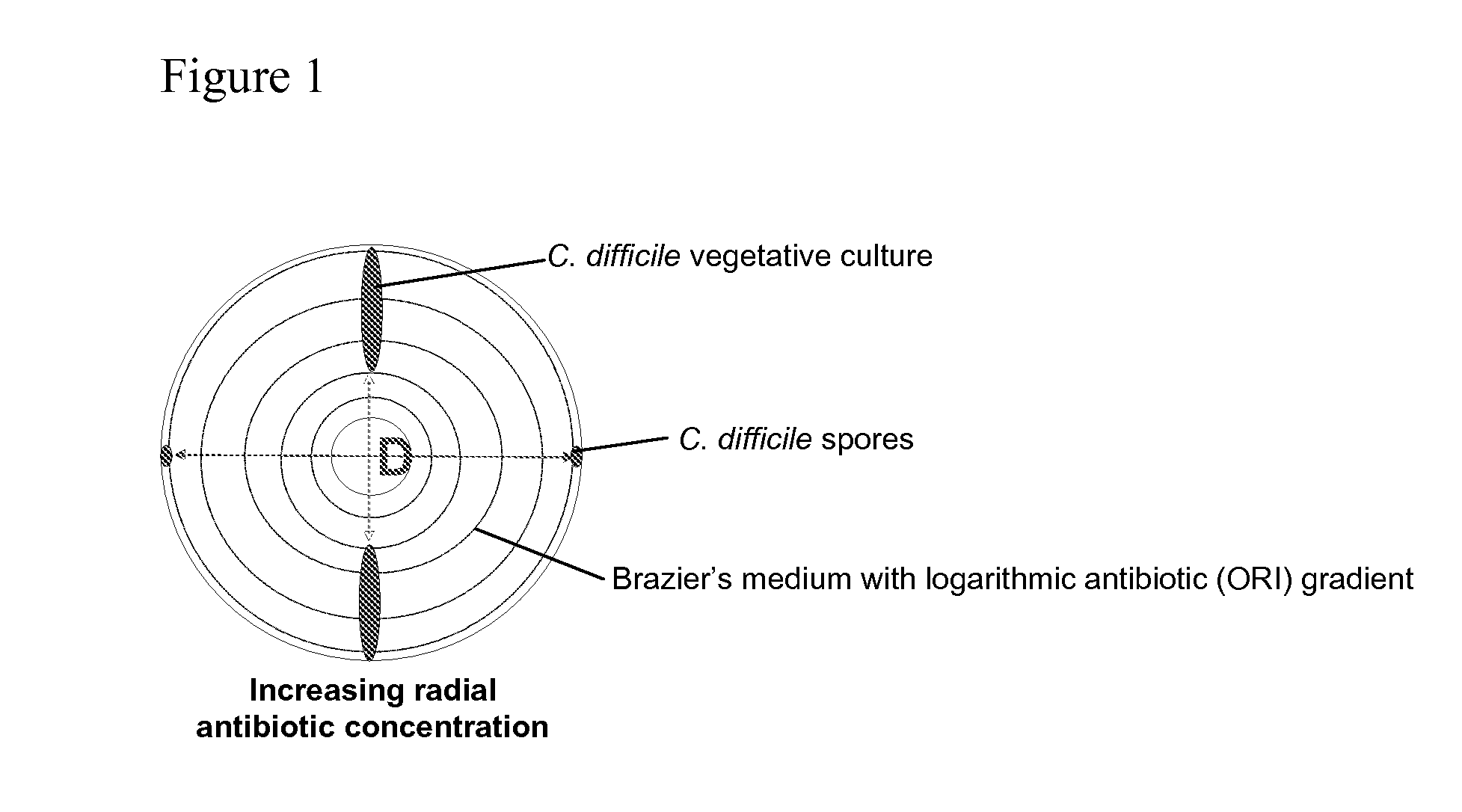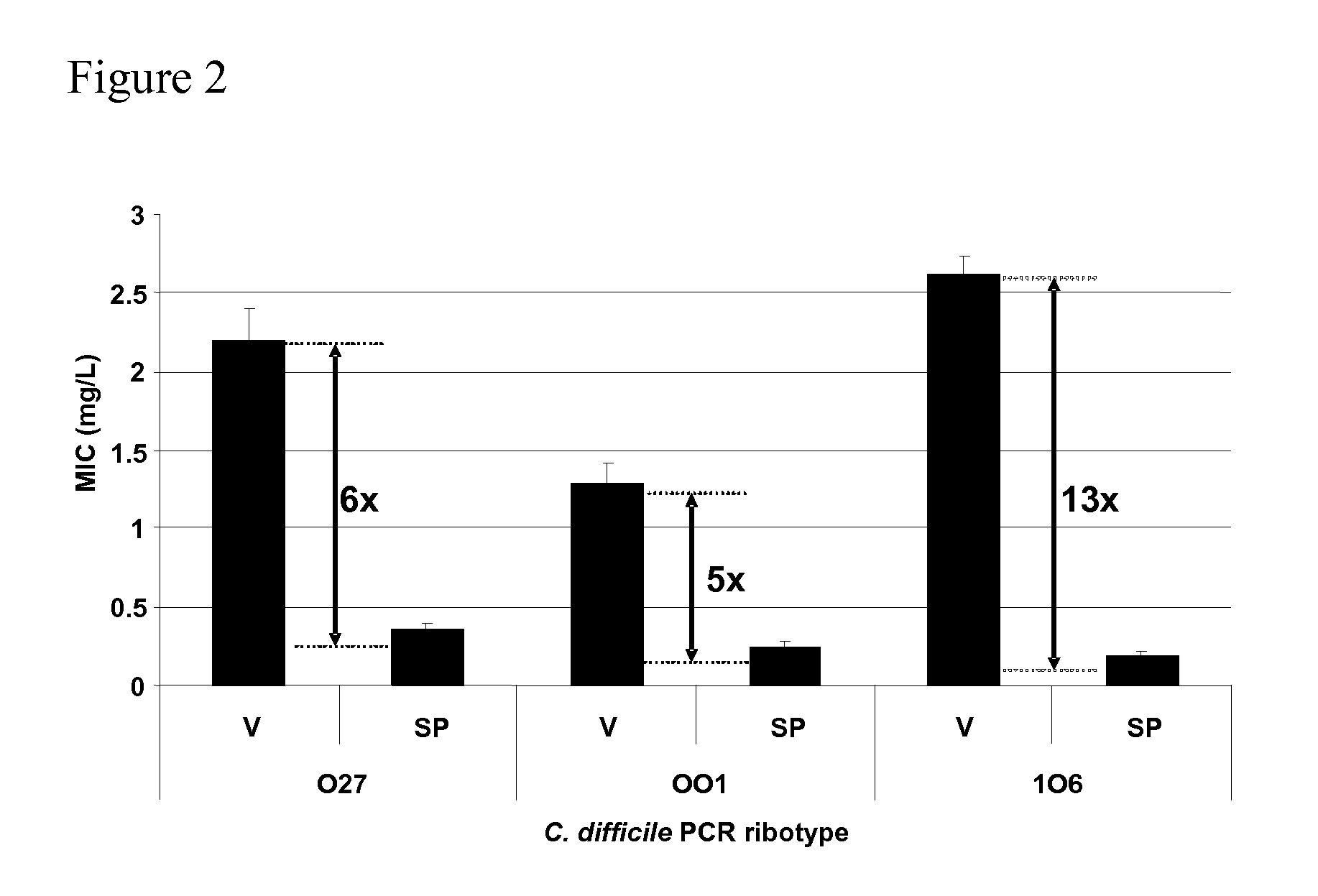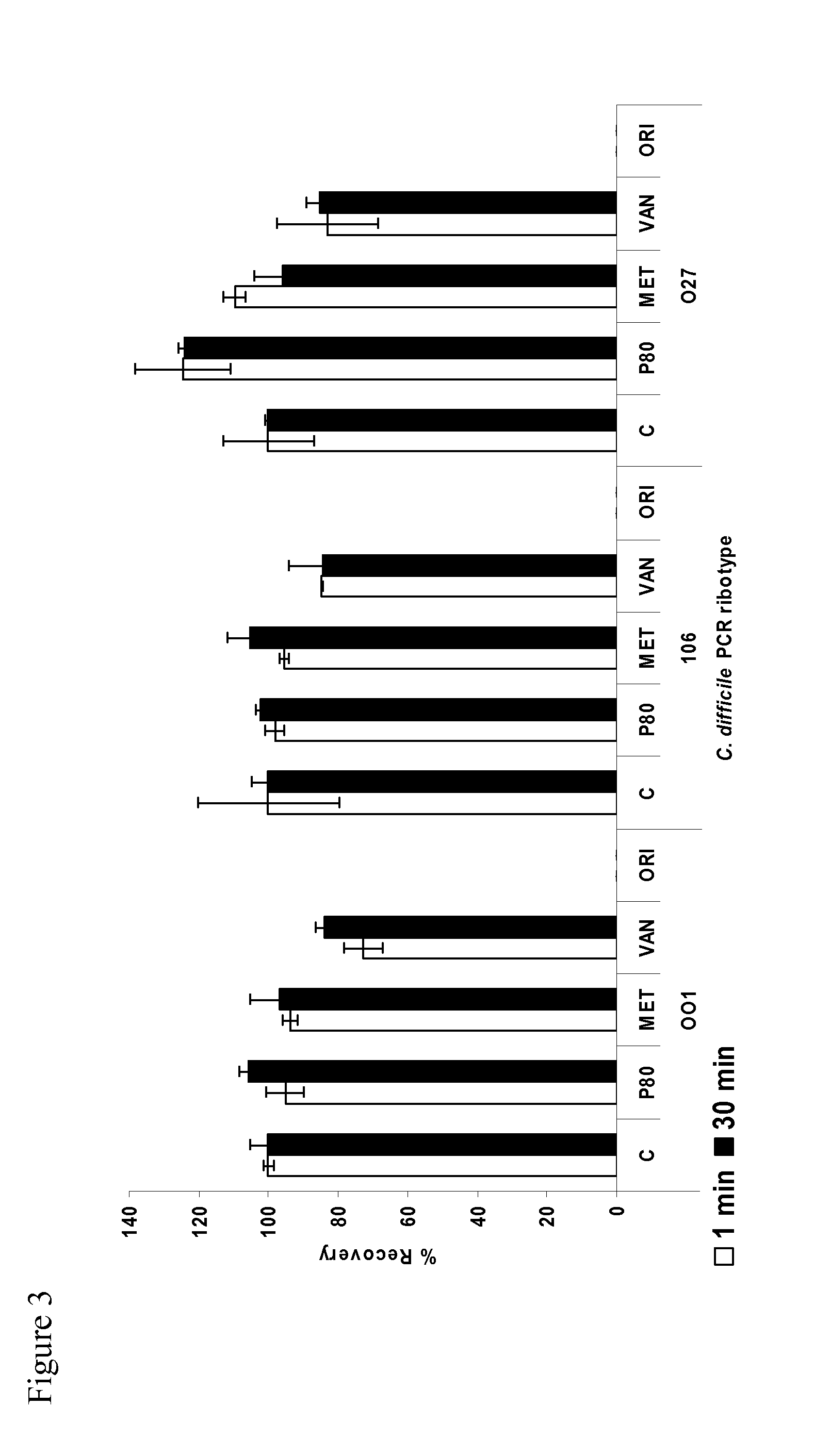Method of inhibiting clostridium difficile by administration of oritavancin
a technology of oritavancin and clostridium difficile, which is applied in the direction of antibacterial agents, peptide/protein ingredients, antibacterial medical ingredients, etc., can solve the problems of affecting the survival rate of patients, the morbidity of hospitalized elderly, and the germination of i>c. difficile /i>spores, so as to inhibit the activation of a c, inhibit the germination of a c, and inhibit the outgrowth
- Summary
- Abstract
- Description
- Claims
- Application Information
AI Technical Summary
Benefits of technology
Problems solved by technology
Method used
Image
Examples
example 1
[0248]In these studies, the activity of metronidazole (MET), vancomycin (VAN), and oritavancin (ORI) against C. difficile spores was evaluated using three experimental methods: spiral gradient endpoint analysis, agar-based culture and phase-contrast microscopy.
[0249]C. difficile Spore Preparation
[0250]C. difficile PCR ribotypes 001, 106 and 027 were inoculated onto Columbia blood agar and incubated anaerobically (37° C.) for 10 d. Growth was harvested into sterile saline and alcohol shocked in an equal volume of 100% ethanol for 1 h. Alcohol-shocked spore suspensions were mixed by vortexing and sonicated for 5 minutes at room temperature. C. difficile phase-bright (non-germinated) spores were separated from phase-dark (germinated) spores and cellular debris by density gradient centrifugation (4000 rpm 15 minutes) following layering onto 50% (v / v in phosphate buffered saline) Urografin 370 (Schering, Germany). The density gradient centrifugation step was performed twice. Pellets of p...
example 2
[0262]Additional studies regarding the activity of oritavancin (ORI) versus metronidazole (MET) and vancomycin (VAN) on genotypically distinct C. difficile strains were conducted using agar incorporation and broth microdilution methods.
[0263]Materials and Methods
[0264]Bacterial Strains
[0265]Thirty-three genotypically distinct (by PCR ribotyping) C. difficile isolates were selected from a library of strains at the Leeds General Infirmary (Leeds, UK). Representative isolates of epidemic C. difficile PCR ribotypes 001, 106 and 027 were included in the panel. Control isolates of Staphylococcus aureus ATCC 29213, Enterococcus faecalis ATCC 29212 and Bacteroides fragilis ATCC 25285 were included in all MIC determinations to ensure procedure accuracy.
[0266]MIC Determination
[0267]Agar incorporation MICs were determined based on the method of Freeman and Wilcox (J Antimicrob Chemother 2001; 47: 244-6). Briefly, bacteria were cultured in Schaedler's anaerobic broth (Oxoid, Basingstoke, UK) at...
example 3
Comparative Effects of Antibiotic Exposure on Viability of Clostridium difficile Spores
[0274]Using different experimental methods, oritavancin was demonstrated to disrupt the transition from dormant C. difficile spore to vegetative cell to a greater extent than existing therapeutic antimicrobials for CDI.
[0275]Experiments were conducted to determine the independent effects of metronidazole, vancomycin and oritavancin on the viability of C. difficile spores exposed to these antibiotics. The experiments were in general performed by mixing C. difficile spores with an antibiotic, filtering the solution through cellulose acetate filters to collect the spores, applying the spore-containing filters to nutrient agar, and determining the number of spores remaining on the filters after a selected period of time.
[0276]Prior experiments have suggested antimicrobial agents may be able to bind cellulose acetate filters despite washing, thus residual antimicrobial may reduce recovery of C. diffici...
PUM
| Property | Measurement | Unit |
|---|---|---|
| time | aaaaa | aaaaa |
| total volume | aaaaa | aaaaa |
| concentration | aaaaa | aaaaa |
Abstract
Description
Claims
Application Information
 Login to View More
Login to View More - R&D
- Intellectual Property
- Life Sciences
- Materials
- Tech Scout
- Unparalleled Data Quality
- Higher Quality Content
- 60% Fewer Hallucinations
Browse by: Latest US Patents, China's latest patents, Technical Efficacy Thesaurus, Application Domain, Technology Topic, Popular Technical Reports.
© 2025 PatSnap. All rights reserved.Legal|Privacy policy|Modern Slavery Act Transparency Statement|Sitemap|About US| Contact US: help@patsnap.com



